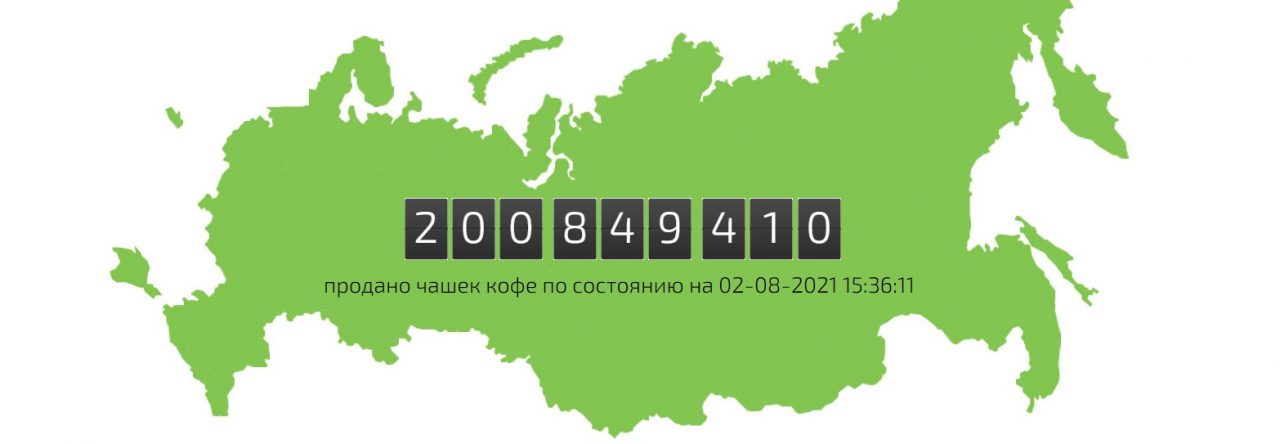Рart 1. The secret of success are not the coffee beans, but the type of coffee machines and proper setting
Much has been written about the gas stations – it is a unique segment of the market, interest in which won’t disappear as long as there is a need to fill cars with the fuel. According to the standard classification businesses of any gas stations network are divided into two main categories – fuel (fuel) and non-fuel (nonfuel) ones.
“Cafe at the gas station” not only creates the “atmosphere” of the gas station, but also has a huge business potential that has yet to open on the Russian market. Indicative is the experience in Europe, where sales of non-fuel products account for about 60% of the overall gas stations’ profits. The Russian players have this figure in the range between 5 to 20%. There is some work to be done.
Interestingly enough, gas station is the only place where the business linked with the global product №1 (oil and oil-based products) is closely related to the business linked with global product №2 – coffee. So it is not surprising that these two businesses, each in their category are the main sources of profits for gas stations. Without going into the intricacies of stock prices and the prices of green coffee beans, we decided to discuss the development of this category in the domestic market and to answer the question of how the modern Russian gas station managers might enhance the effectiveness of coffee-related businesses of their chains.
This round table was attended by:
Alexander Kuzmin – an expert who has spent more than 20 years in non-fuel businesses in Russian and foreign gas station networks;
Ksenia Van de Kamp – managing partner of BMS (USA);
Artem Astafurov – Managing Partner, Senior Vice president of DataArt (USA);
Moderator – Dmitry Petrov;
Dmitry Petrov: Today we have a rather unusual audience to talk about coffee – there are no famous barista or traditional suppliers of coffee grounds for HoReCa market among us. Instead we have an expert on non-fuel businesses for gas stations, innovative marketing specialist and IT-manager of a global level company, a rather peculiar team of participants to discuss a business, traditionally surrounded by an aura of mystery and magic of coffee aroma. Don’t you think?
Alexander Kuzmin: The composition of this conversations participants seems unusual only at first glance – your humble servant have been truly dedicated to business support of gas stations for the most of his working life, and both of our foreign visitors are managers who have attained success in one of the most challenging and competitive markets of the world – North America.
Despite the fact that their business belong to the different fields, they are united by a successful joint project directly related to the topic of our roundtable.
I won’t be telling lies if I will argue that the sale of coffee drinks is one of the most marginal businesses in the world. Cost of a cup of coffee that we buy for 80-90 rubles is starting from 6 rubles and almost never exceed 20 rubles. It is easy to calculate that the total selling of 100 cups per day with a margin of 60 rubles per cup brings profit to business’ owners at the level of at least 2.16 million rubles a year.
And that is very important in modern conditions, since the profitability of such a business is not as sensitive to fluctuations of exchange rates due to the stable demand from end users – people drink coffee no matter what economic cataclysms are there.
Our conversation is about how to get, keep and increase this source of income in such unique business structures which are the Russian gas stations. At the same time, the issues are relevant not only for gas stations chains, but also for any commercial enterprise included in the perimeter of businesses linked to the sales of coffee drinks for retail consumers.
Dmitry Petrov: I agree – our readers, first of all, are interested in how to make a business of selling coffee productive from the point of view of the number of cups sold, or rather, in terms of the profit received by each point of sale. Incidentally, in the example you gave a benchmark is of 100 cups a day, but I know that statistics of average sales of a single gas station in Russia does not exceed 40-50 cups a day.
Alexander Kuzmin: It all depends on how the business is organized. I know of gas stations where the average sales reach 600 or even 800 cups a day. But this is largely the result of successful organizational aspects of the station’s work, rather than quality measure of the coffee business at the level of whole chain. In my experience, I will say that the rate of 80-100 cups of coffee per day may be achieved by any gas station with proper coffee business organization.
Dmitry Petrov: Let’s imagine that I am a top-manager who is puzzled by improving the efficiency of the coffee business of chain of stations I direct. How do I choose the supplier of coffee beans so as coffee at my stations was delicious and as a consequence, demanded by customers?
Alexander Kuzmin: In the very specification of the problem lies the fundamental mistake – if we are talking about the gas station, then 90% of success of coffee business reforms you devise will not depend on whose coffee beans you choose and on what equipment you want to prepare coffee, but on who and how will configure the equipment, determining the taste of the coffee “made by your chain”, as well as how well the equipment will be serviced by chosen service company.
Dmitry Petrov: I.e. you want to say that the secret of success are not the coffee beans, but the type of coffee machines and proper setting?
To be continued. See you soon.

Leave a Reply